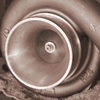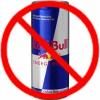Which would imply that a roughly similar transient effect would be seen on the supply side of the HP pump, with some modification to the waveform caused by the HP pump.You are very sharp, sir!
I again made a quick back of the envelope calculation with the values of 10500 rpm, 6 cylinders all firing, fuel flow measured in kilos at the flow meter 100 kg/h and using a modest road car alike 4 ms injection sequence getting a flow rate north of 1700 kg/h per single injector averaged over the injection sequence. Of course the F1 engines are more aggressive so the real single injection cycle flow rate per cylinder is actually closer to 10 000 kg/h.
So as the regulation is written, the very fuel injectors would be illegal when the car is still comfortably using the allowed 100 kg/h over even one full 720 degree ignition cycle of the engine.
I assume that this is why the FFM is situated adjacent to the fuel tank, to allow some damping effect on these transients, resulting from the inertia of the fuel mass in the LP supply lines. I presume the sampling rate of the FFM, and its modification early last year, was an attempt to reduce these transients causing false high flow readings.
To my engineering biased mind, any design team which manages to extract extra performance from exploiting these physical effects, which seem to be results of the side effects of the regulations, should be applauded, rather than penalised, as they appear to have extracted performance without additional energy input.
Edited by ExFlagMan, 22 March 2015 - 21:47.
































